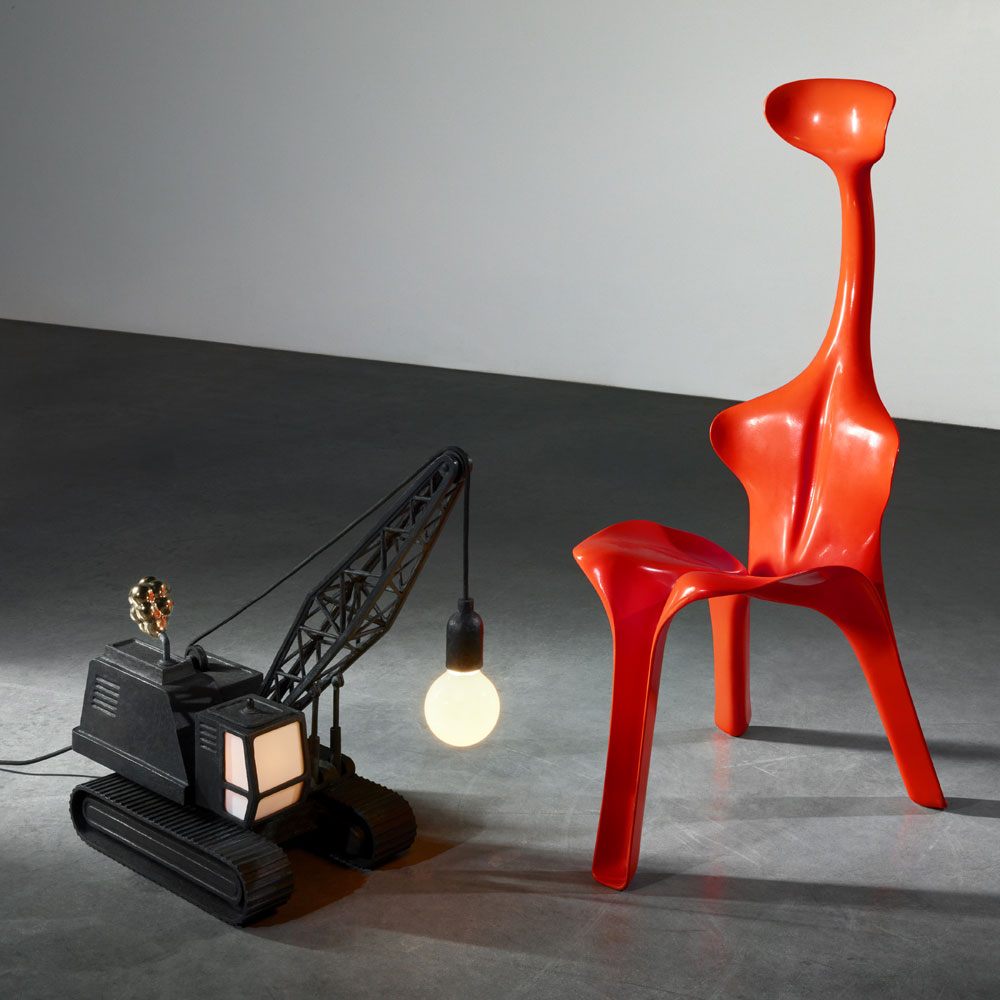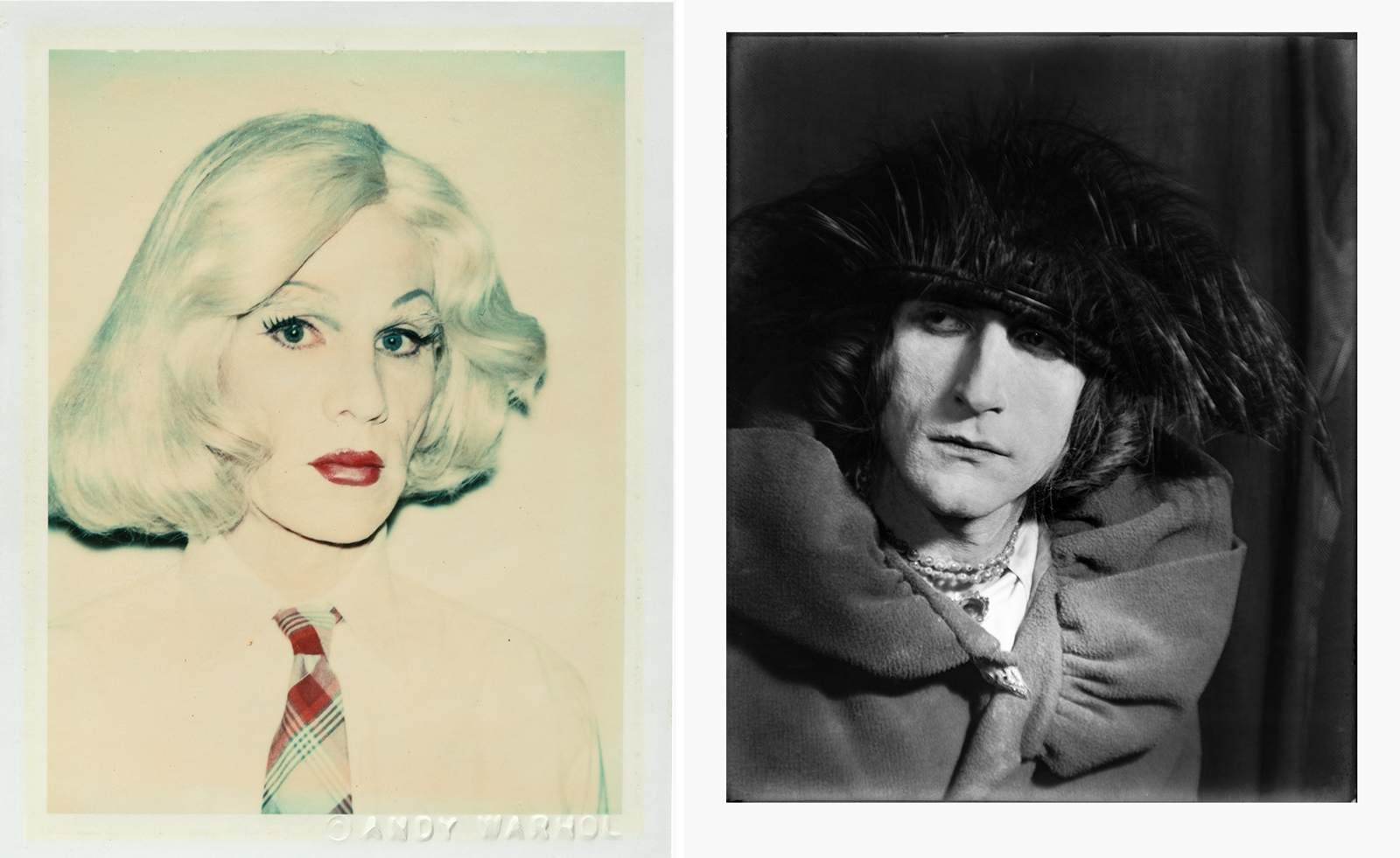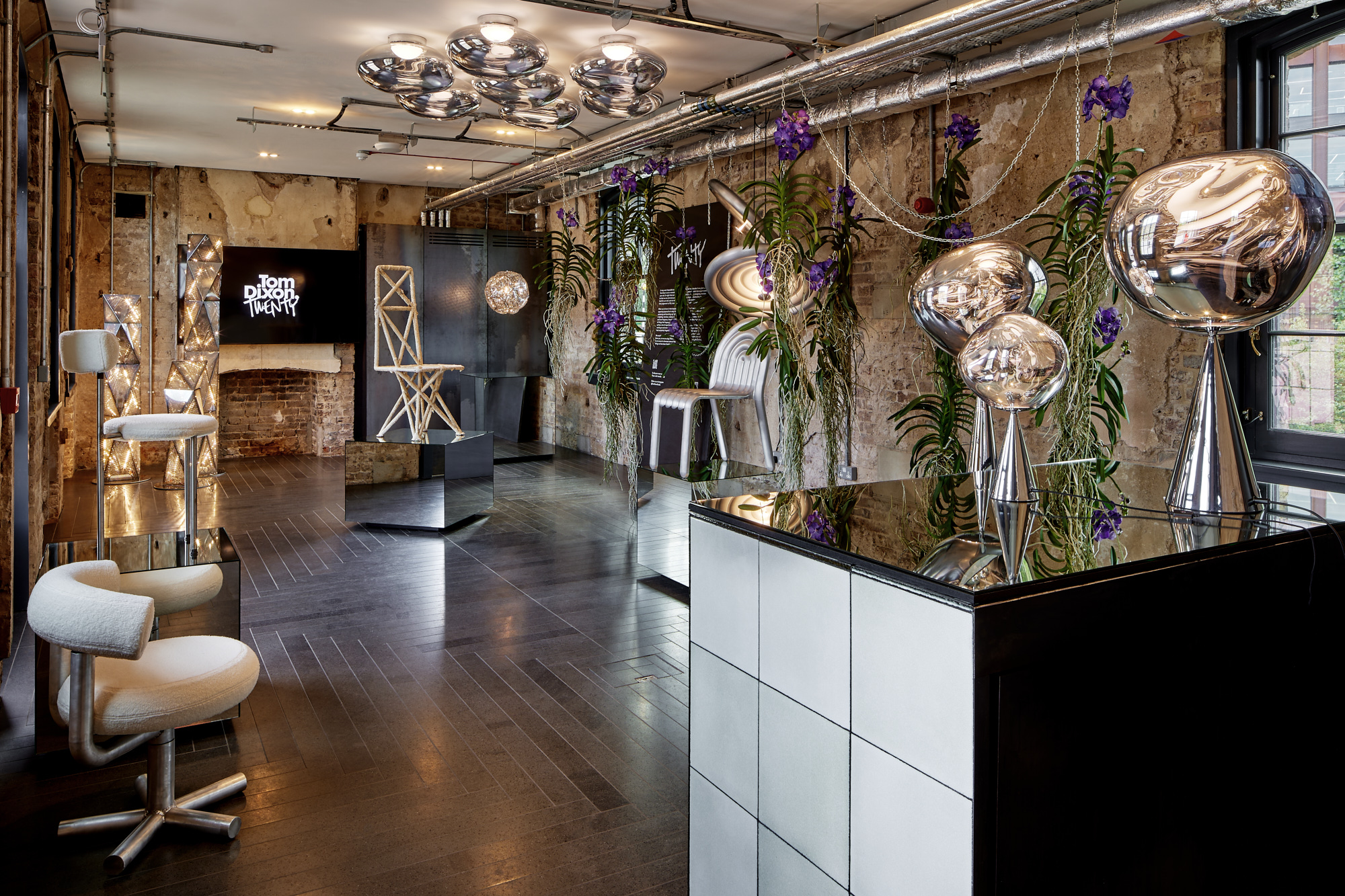Piece corps: Wallpaper* and Sotheby’s join forces to reveal what great design is made of


Leon Chew - Photography
Sotheby’s 20th century design specialists Cécile Verdier, senior director, and Laetitia Contat-Desfontaines, deputy director and head of sale, with Wallpaper* brand and content director Tony Chambers, at Sotheby’s warehouse in West London. From left to right; ‘Floris’ chair in moulded fibreglass-reinforced polyester, 1967, by Günter Beltzig; ‘Wing-Nut’ chair in hardboard, piano hinges and wing-nut connectors, 1985, by Jasper Morrison; ‘All Night Long’ table in coated carbon fibre and Nomex honeycomb paper, 2002, by Ron Arad; ‘Fragments’ wall lamp in reclaimed Venini glass and steel, 2010, by Fernando & Humberto Campana, for Venini; ‘SQN5-T’ table in stainless steel, 2012, by Zhang Zhoujie; ‘Bone’ rocker in cast black marble resin, 2009, by Joris Laarman; ‘Flora’ bureau, model No. 2131, in mahogany-veneered wood, mahogany, brass and printed paper, designed C1950-51, by Josef Frank, for Svenskt Tenn.
‘Living in a Material World.’ It’s a brave title for an auction, perhaps. Yet for Sotheby’s design auction on 17 October, curated by our own brand and content director Tony Chambers, the title has a very literal intent: the 150-odd pieces included have been selected for their material expression. ‘It’s interesting how our perception of the word “material” has changed in the three decades since Madonna’s anthem,’ Chambers says. ‘It was a crass and fairly derogatory term not so long ago that spoke of greed, but today we think of the word as having more noble, fine and pure connotations.’ To be clear: this is an auction exploring materiality, not materialism.
Standing in Sotheby’s storage facility in the outer reaches of West London is a surreal experience. After wending one’s way through warehouses filled with canned drinks and mass-market furniture (a stark reminder that we do still live in Madonna’s material world), you find yourself surrounded by goods of a much higher order. Out of context, away from the workshop, gallery, hotel lobby or home, it’s curiously humbling to see these spectacular works of design for what they are. They were not intended to be lots or price tags, but ideas brought to life through craft and technology as functional objects. Jasper Morrison’s ‘Wing-Nut’ chair is in one corner, its expressive utility fitting right into the warehouse. A ‘Cake’ stool by the Campana brothers is being carried in a grey industrial laundry bag, while their ‘Broken Dreams’ chandelier for Venini sails past on a trolley. Everything feels off duty and all the more fascinating and spectacular for it.

‘Papel’ sofa in corrugated cardboard and chromium-plated stainless steel, designed 1993, executed 2001, by Fernando & Humberto Campana. Foreground, ‘SQN5-T’ table, 2012, by Zhang Zhoujie.
Cécile Verdier, senior director and coworldwide head of 20th century design at Sotheby’s, is leaning against Marc Newson’s ‘Extruded Table 3’, a seemingly impossible piece of furniture laser-cut from a single block of Striato Olimpico marble. You can’t help but touch it. It requires no small amount of willpower not to lick it. ‘A consignment arrived last year with a group of six pieces from a European private collector,’ Verdier explains. ‘They were an interesting mixture of contemporary pieces – Hadid, Newson, Arad – and we were struck by the collective narrative of material expression. Wallpaper* was the obvious partner to help us tell this story. Tony and his team have helped cross the boundaries of different industries, introducing us to the pioneering and the common elements in design that shape modern life.’
This was the seed from which the auction has grown. It is a collection that traces the evolution of how designers master and manipulate materials, from the politeness of post-war furniture to the use of the most advanced technologies to achieve something more akin to alchemy. As such, there’s an anthropological thread to the hoard. The collection tells the story of modern design through the lens of materials, encompassing the evolution not just of technology, but of skill, taste, trend and wider social values, too.
Materiality is more than just a handy hook for bringing the collection together. It’s also a response to where we find ourselves today, reflecting our growing appreciation of materials. As daily life is increasingly spent in virtual worlds or on digital desktops, we yearn for analogue, physical experiences to act as a counterbalance. Materials summon up primal urges – hence the desire to lick the marble. ‘Across contemporary life we are witnessing profound appreciation for experiences and sensations that ground us,’ Chambers explains. ‘We respond to things that engage our senses and make us feel human.’ Bearing testament to this, in the warehouse there’s a lot of stroking going on.

Left, ‘Wrecking Ball’ in cast patinated bronze, cast and polished brass, and glass, 2010, by Studio Job. Right, ‘Floris’ chair, 1967, by Günter Beltzig.
Laetitia Contat-Desfontaines, Sotheby’s 20th century design head of sale, elaborates, keeping one hand on Ron Arad’s ‘All Night Long’ table: ‘It’s almost like an antidote to our obsession with social media. We crave the materiality and texture that design offers. Craftsmanship is a tangible link to reality. It speaks of skill, tradition, quality and time – when we feel these qualities we build a relationship with the pieces.’
‘People buy design at auction because they love the piece,’ adds Verdier. ‘They don’t buy to sell, in the same way as they do with art. Generally, they live with the designs they buy, and use them, and so they have an intimate relationship with them – it’s a commitment.’
Surveying the diverse lots that will be up for auction in October, it’s a powerful concept. Taking materials as a starting point encourages a new appreciation of older, familiar pieces and a fuller interrogation of more contemporary designs. Joris Laarman’s extraordinary ‘Bone’ rocker, 3D-printed using powdered Belge Noir marble and resin, sits beside a mahogany bureau by Josef Frank for Svenskt Tenn, bedecked in botanicals. Both are exquisite examples of their period’s craftsmanship and material expression, six decades apart. Elsewhere, Pierre Jeanneret’s armchairs sit beside the Campana brothers’ ‘Cake’ stool; the elegant utility of wood and leather designed for civic duties in Chandigarh is juxtaposed with the synthetic fluffy toys found on São Paulo street stalls – kitsch commerce elevated into something valuable.
The breadth and depth of this collection makes clear how design has evolved over time in the minds and hands of different people. It is a positive story of progress. ‘Each piece is a story brought to life through materials,’ Chambers summarises. ‘Any new technology presents an opportunity for reinventing or developing a material into a new form. The story of design is effectively the combination of human ideas, material expression and technological development.’

The auction will feature around 150 pieces of furniture, including the ‘Vertical’ bench (left) in wood and painted steel, 2016, by Pablo Reinoso and ‘Wing-Nut’ chair (right), 1985, by Jasper Morrison.
INFORMATION
‘Living in a Material World’, pre-sale exhibition: Friday 13 – Monday 16 October; auction: Tuesday 17 October, For more information, visit the Sotheby’s website
‘The Rise of Design and its Importance in our Digital World’ talk will take place on Saturday 14 October. The event is free, register for tickets here
Wallpaper* Newsletter
Receive our daily digest of inspiration, escapism and design stories from around the world direct to your inbox.
ADDRESS
Sotheby’s
34–35 New Bond Street
London W1A 2AA

Hugo is a design critic, curator and the co-founder of Bard, a gallery in Edinburgh dedicated to Scottish design and craft. A long-serving member of the Wallpaper* family, he has also been the design editor at Monocle and the brand director at Studioilse, Ilse Crawford's multi-faceted design studio. Today, Hugo wields his pen and opinions for a broad swathe of publications and panels. He has twice curated both the Object section of MIART (the Milan Contemporary Art Fair) and the Harewood House Biennial. He consults as a strategist and writer for clients ranging from Airbnb to Vitra, Ikea to Instagram, Erdem to The Goldsmith's Company. Hugo has this year returned to the Wallpaper* fold to cover the parental leave of Rosa Bertoli as Global Design Director.
-
 From Rembrandt to Warhol, a Paris exhibition asks: what do artists wear?
From Rembrandt to Warhol, a Paris exhibition asks: what do artists wear?‘The Art of Dressing – Dressing like an Artist’ at Musée du Louvre-Lens inspects the sartorial choices of artists
By Upasana Das
-
 Meet Lisbeth Sachs, the lesser known Swiss modernist architect
Meet Lisbeth Sachs, the lesser known Swiss modernist architectPioneering Lisbeth Sachs is the Swiss architect behind the inspiration for creative collective Annexe’s reimagining of the Swiss pavilion for the Venice Architecture Biennale 2025
By Adam Štěch
-
 A stripped-back elegance defines these timeless watch designs
A stripped-back elegance defines these timeless watch designsWatches from Cartier, Van Cleef & Arpels, Rolex and more speak to universal design codes
By Hannah Silver
-
 ‘R for Repair’ at London Design Festival displays broken objects, re-formed
‘R for Repair’ at London Design Festival displays broken objects, re-formedIn the second half of a two-part exhibition and as part of London Design Festival 2022, ‘R for Repair’ at the V&A displays broken objects, re-formed
By Martha Elliott
-
 ‘Finding quality through the act of making’: Pearson Lloyd celebrates 25 years of design
‘Finding quality through the act of making’: Pearson Lloyd celebrates 25 years of designPearson Lloyd’s show ‘Change Making’ reflects on past designs from its archives, showcasing the influences on and evolution of the studio, from furniture design to the NHS
By Martha Elliott
-
 Tom Dixon marks his studio's 20 years with a show of design experiments
Tom Dixon marks his studio's 20 years with a show of design experimentsMushroom, cork, steel coral and more: Tom Dixon showcases an overview of his design experiments as he celebrates his practice's 20 years
By Rosa Bertoli
-
 Porro unveils new London showroom at Coal Office
Porro unveils new London showroom at Coal OfficeLondon Design Festival 2022: industrial architecture meets pure geometries in the new Porro showroom, taking over a space within Tom Dixon’s Coal Office to showcase the brand’s systems and furniture
By Rosa Bertoli
-
 Vitra unveils new London home in the Tramshed, Shoreditch
Vitra unveils new London home in the Tramshed, ShoreditchLondon Design Festival 2022: after a year-long renovation, Vitra opens the door to its new showroom in the heart of Shoreditch
By Rosa Bertoli
-
 Mudlarking beside the River Thames inspires The New Craftsmen’s makers
Mudlarking beside the River Thames inspires The New Craftsmen’s makersLondon Design Festival 2022: The New Craftsmen’s new collection, ‘Claylarks’, features work from a group of creatives inspired by a River Thames mudlarking expedition
By Mary Cleary
-
 One tree, ten designers: SCP presents The One Tree Project at London Design Festival
One tree, ten designers: SCP presents The One Tree Project at London Design FestivalLondon Design Festival 2022: SCP enlisted ten British designers to create furniture and objects from a felled ash tree from founder Sheridan Coakley's Hampshire garden
By Francesca Perry
-
 London Design Medals 2022
London Design Medals 2022London Design Medals 2022 are awarded to costume designer Sandy Powell, architect Indy Johar, researcher Joycelyn Longdon and photographer Sir Don McCullin
By Rosa Bertoli